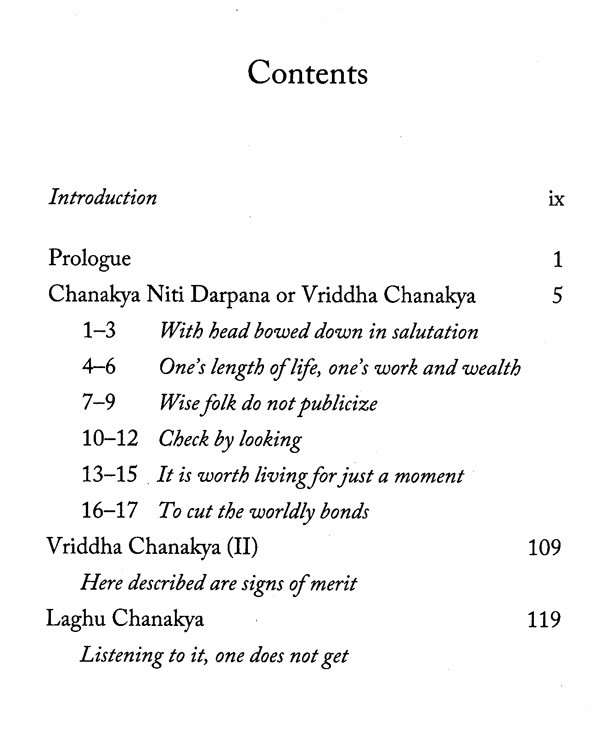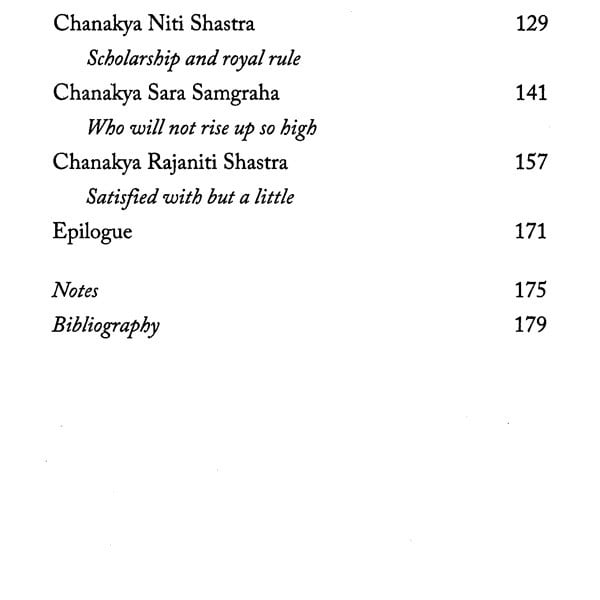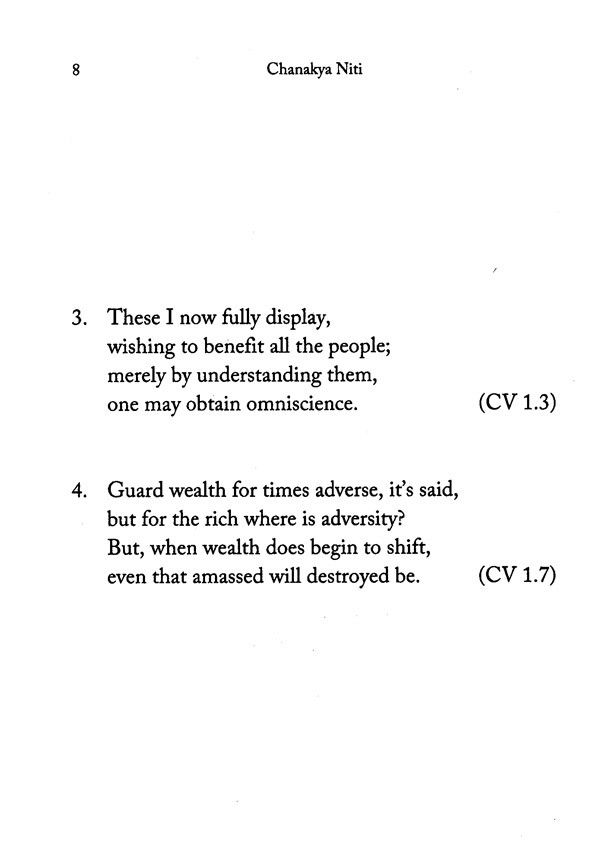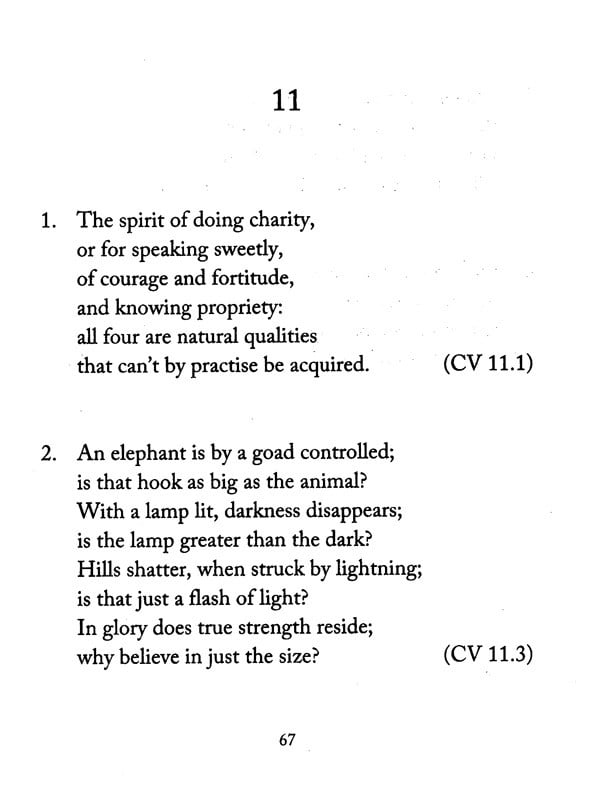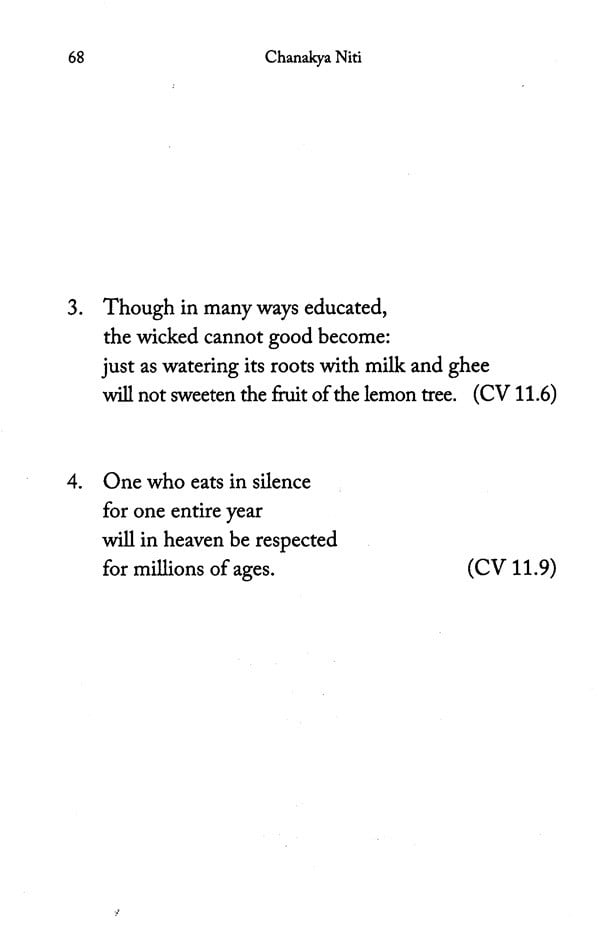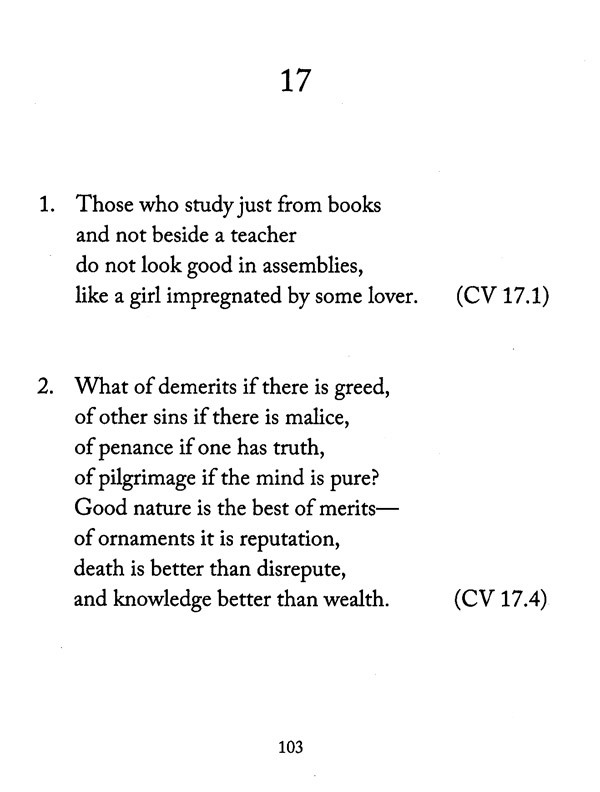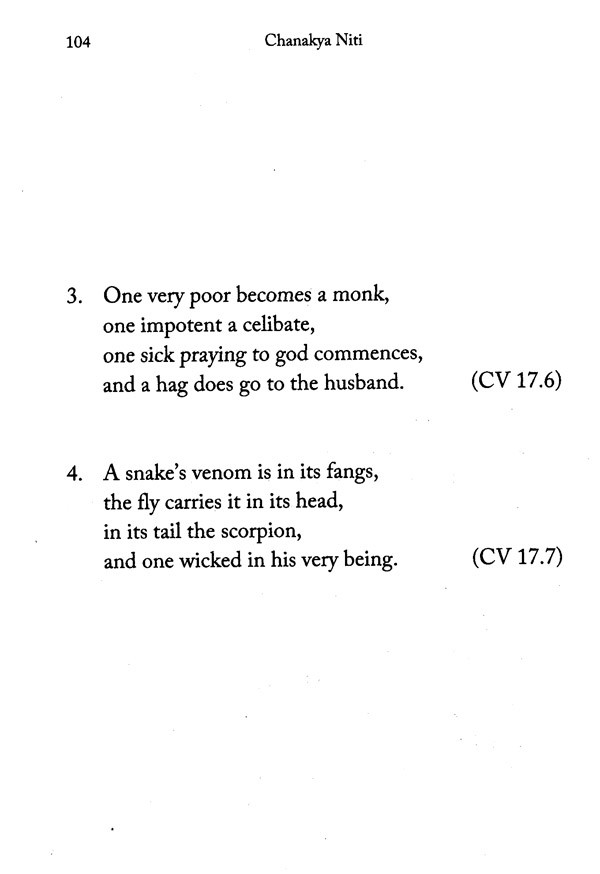
Chanakya Niti- Verses on Life and Living
Book Specification
| Item Code: | NBZ617 |
| Author: | A. N. D. Haksar |
| Publisher: | Penguin Books India Pvt. Ltd. |
| Language: | English |
| Edition: | 2020 |
| ISBN: | 9780143444657 |
| Pages: | 184 |
| Cover: | PAPERBACK |
| Other Details | 8.00 X 5.00 inch |
| Weight | 160 gm |
Book Description
Chanakya's numerous sayings on life and living - popularized in the wake of his successful strategy to put Chandragupta Maurya on the throne, if legend is to be believed - have been compiled in numerous collections and anthologies over time. This entire corpus was referred to as Chanakya Niti.
These aphorisms, which continue to be recalled and quoted in many parts of India, primarily deal with everyday living: with family and social surroundings, friends and enemies, wealth and knowledge, and the inevitable end of everything. They also advise on the good and bad in life, proper and improper conduct, and how to manage many difficult situations.
A.N.D. Haksar's wonderful translation also places this work into context, showing how these verses have endured in the popular imagination for so long.
The names Chanakya and Kautilya have become iconic in modern India. Both symbolize the worldly aspects of the country's ancient thought and knowledge, rather than the spiritual and philosophic dimensions more written about at present. Both names, in fact, represent the same personage, and have come to be recognized as bywords for worldly wisdom and political skill. This reputation is evident from their having been conferred on prominent places and streets in the national capital, as well as the titles of some Indian academic institutions that specialize in administrative and governmental studies.
The name Kautilya is well known as that of the author of Arthashastra, the seminal Indian treatise on politics and administration, diplomacy and war. Even better known is the name Chanakya, used in describing his life and work. It is also identified with a vast collection of aphoristic sayings in Sanskrit that have been attributed to him. Apart from some philosophical thoughts, these primarily comprise musings on human life and everyday living, its problems and solutions. Called Chanakya Niti as a whole, these epigrammatic verses of observation and advice have frequently been quoted in later Sanskrit works and anthologies. Many are still remembered. A representative selection drawn from their overall corpus has in this book been translated in contemporary language for readers today.
Before introducing the work, one may begin with some words about its originator. He is known by three names: two famous and one almost forgotten. In scholarly opinion, the name Chanakya is a patronymic, and Kautilya indicative of the family line. The given name, also used in past centuries, was Vishnu Gupta. This triple nomenclature is corroborated in other ancient works. Of these, two are the celebrated fifth-century AD play Mudrarakshasa by Vishakha Datta, and the respected seventh-century AD political manual Nitisara by Kamandaki. The latter begins with the third name, and its Sanskrit commentator also gives the other two.
As recounted in old Indian scriptural histories like the Vishnu Purana and the Bhagavata, Chanakya was a contemporary of Chandragupta Maurya, the famous founder of a historic Indian empire in the fourth century BC. There are several picturesque accounts of how the two came together. While the former was an accomplished young man of courtly background, Chanakya has been described as a poor but learned person of unattractive appearance, but nonetheless skilled, determined and cunning, with a strong, vengeful personality. Given below is a brief summary of these tales.
Chanakya began life during pre-Mauryan Nanda rule, at its capital city Pataliputra in modern Bihar. His father's problems with the rulers forced him to go away, and he returned many years later after studies at the north-western university of Takshashila, or Taxila, in modern Pakistan. With little interest in the priestly and other duties of his caste, he was more attuned to power and political activity, and consequently looked for openings there.
The Nanda king at that time had two ministers who were rivals. Chanakya was picked up by one who was losing ground to the other, and introduced by him to the ruler at a royal sacrificial ceremony. There, because of his ugly looks, the newcomer was insulted by the king and summarily dismissed. Deeply angered and determined on revenge, he then plotted with the aggrieved minister, and successfully arranged to have the king and all his sons poisoned to death. In the struggle for succession that followed, he helped Chandragupta Maurya-a son of the dead king's palace maid, Mura-to seize power. Then, as a respected friend and adviser of the new ruler, he facilitated the growth of the Mauryan empire, but himself led a simple life, marked by wise opinions and guidance.
**Contents and Sample Pages**
